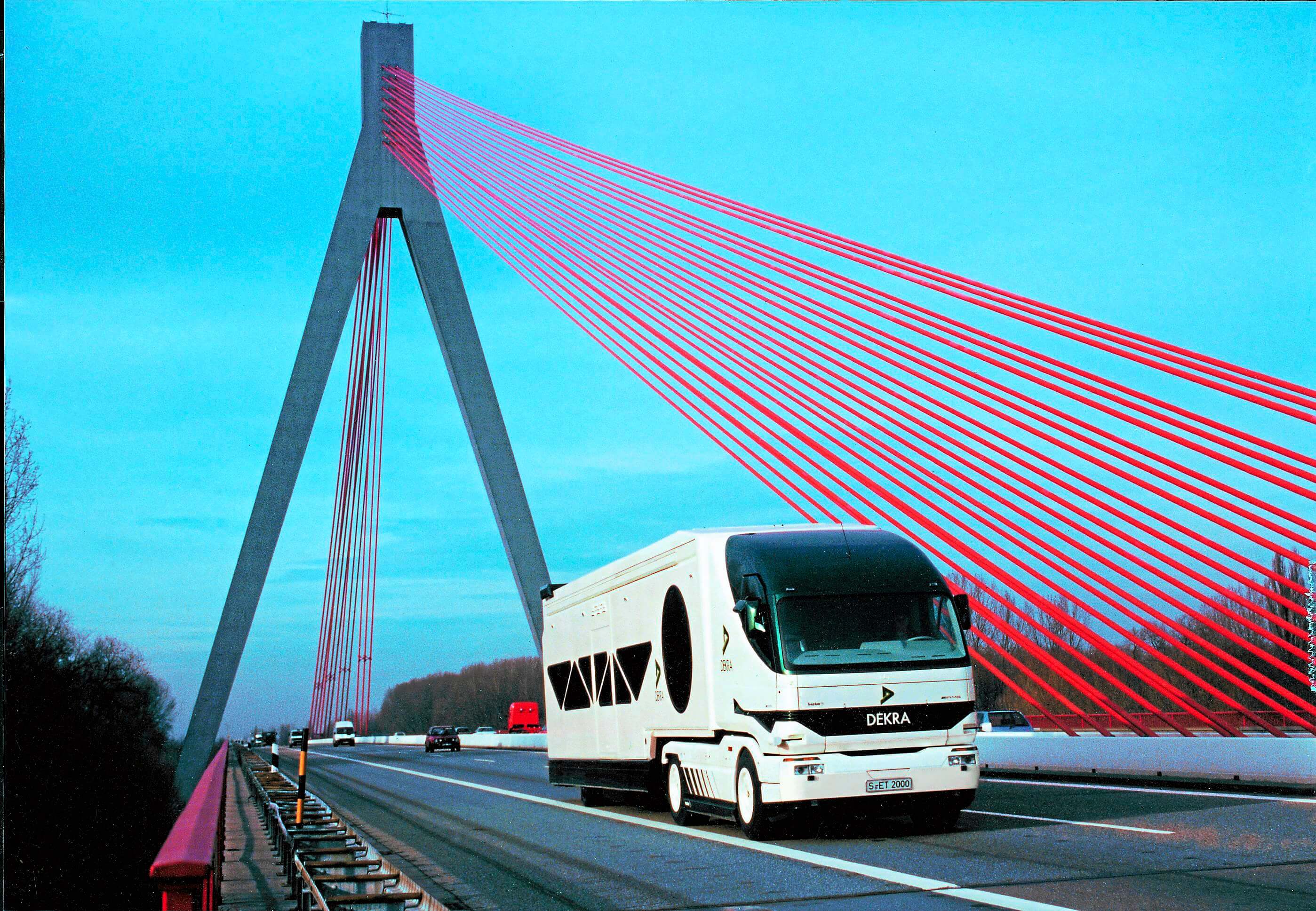A visionary truck
In 1989, Mercedes-Benz, AMG and DEKRA presented the concept of the articulated truck of the future – Eurotruck 1. In contrast to other studies on future trends, the vehicle was designed to meet registration requirements and the components were completely functional. For a long time now, many components and systems that were pioneering at the time have found their way into trucks and cars. Nevertheless, when comparing the safety level of Eurotruck 1 with today’s standards in mind, there are certainly grounds for criticism. It may have once seemed visionary to position a cellphone and fax machine directly next to the driver, but today we all know that the potential for drivers to become distracted by communication devices presents an enormous safety risk. Another problem that extends to vehicle construction today became apparent back in those days, too: The safety aspect of a good, direct view from a vehicle onto the areas directly surrounding the vehicle was compromised by the futuristic design – the body design in the area of the side windows actually increased the vehicle’s blind spot.
By contrast, the full fairing was very advanced; not only did it enhance aerodynamics and, in turn, fuel consumption, but it also increased protection for cyclists and pedestrians. Drivers were also assisted in their maneuvering operations by a range of cameras and a visual and audible reversing assistant – systems that have only relatively recently found their way into the cockpits of modern vehicles. The integrated navigation system – described as a “device for searching for and finding streets” in a documentary on trucks in 1991 – was pioneering not just from a functional point of view.
The integrated restraint systems were also ahead of their time and, unfortunately, are to this day still not available as standard in trucks. Integration of the seat belt in the air-sprung driver’s seat prevented relative movements between the belted driver and the webbing at the B-pillar, a common design in cars back then. To absorb the forces that occur in an accident, the backrest and seat mountings had to be stable. The Eurotruck was also equipped with a driver and passenger airbag. An automatic tire pressure monitoring system increased the level of safety during journeys.
This example shows that it often takes a very long time for new concepts and approaches to find their way into the mainstream despite having already been successfully tested with functional prototypes.

